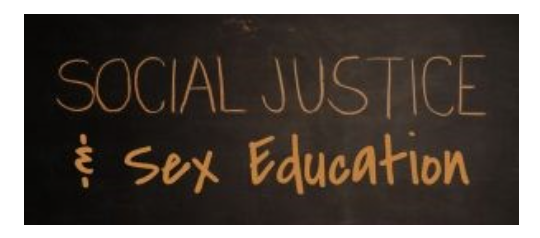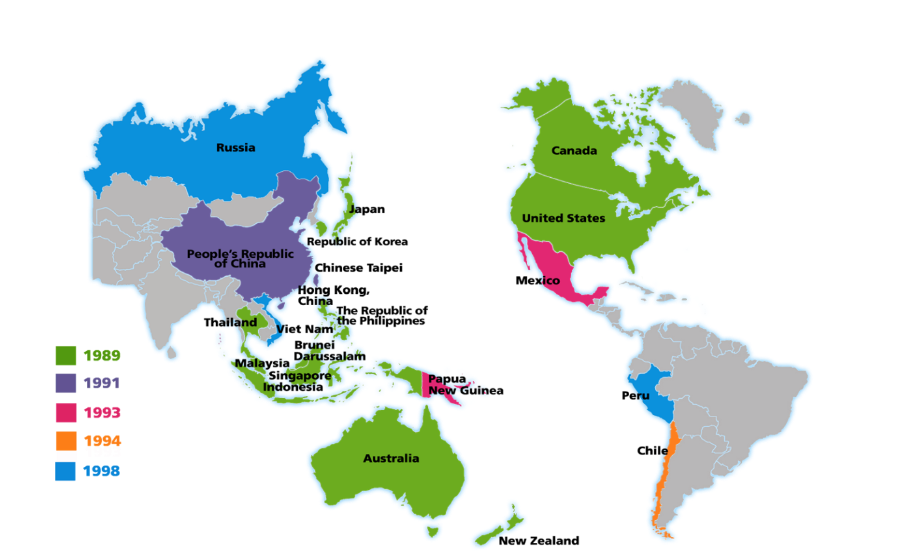Monday, 4th December 2023
Re-Criminalisation of Adultery
In News: The Parliamentary Standing Committee on Home Affairs has recommended the criminalization of adultery on gender-neutral lines, opposing the Supreme Court's 2018 decision to decriminalize adultery.
Adultery in India: An Overview
- More than four years ago, in the landmark 2018 judgment of Joseph Shine versus Union of India, the Supreme Court of India decriminalized adultery.
- The court declared Section 497 of the Indian Penal Code and Section 198 of the Criminal Procedure Code unconstitutional, citing violations of Articles 14, 15, and 21 of the Constitution.
- In response, the Union government has sought clarification, suggesting that promiscuous or adulterous acts should be governed by the specific sections of the Army Act, the Air Force Act, and the Navy Act, which are considered special legislations under Article 33 of the Constitution.
- The recent court statement emphasized that the Joseph Shine case was not concerned with the effects and operation of these relevant provisions and clarified that the court did not necessarily approve of adultery.
|
Definition |
|
|
Historical Perspective |
|
|
Current Legal Status |
|
|
Adultery in Employment |
Service Conduct Rules
|
Key Legal Judgments
- Yusuf Aziz v. State of Bombay (1954)
- Upheld the validity of Section 497, asserting it protected marital sanctity.
- Sowmithri Vishnu v. Union of India (1985)
- Declared Section 497 discriminatory, violating constitutional principles.
- V. Revathi v. Union of India (1988)
- Ruled Section 497 unconstitutional, emphasizing the private nature of adultery.
- Joseph Shine v. Union of India (2018)
- Supreme Court declared Section 497 unconstitutional, citing it as archaic and a violation of fundamental rights.
Challenges in Adultery
- Gender Bias in Previous Legislation
- The committee suggests that adultery poses a threat to the sanctity of the institution of marriage, and criminalizing it is seen as a measure to safeguard this sanctity.
- Threat to the Sanctity of Marriage
- The revoked Section 497 of the IPC was criticized for being gender-biased, penalizing only married men and reducing married women to the status of their husband's property.
- Preserving Societal Values
- The committee emphasizes the need to preserve societal values and norms, suggesting that society abhors marital infidelity and that adultery should be punishable to maintain these values.
- Historical Context and Legal Precedent
- The legislative history, including past debates and recommendations, suggests a historical inclination to criminalize adultery, albeit with varying viewpoints.
- Dissenting Opinions
- There are dissenting opinions, such as those of Congress MP P. Chidambaram, who argues against state interference in the private lives of consenting adults and believes adultery should not be treated as a crime.
Why the Committee Recommends Criminalizing Adultery?
- Safeguarding Sanctity of Marriage
- The Committee contends that adultery should be reinstated as a criminal offense to protect the sacred institution of marriage.
- Emphasizes the view that marriage is considered sacred in Indian society, and its sanctity needs safeguarding.
- Gender-Neutral Approach
- Recommends making adultery a gender-neutral offense, holding both men and women equally culpable under the law.
- Points out the historical perspective that the revoked Section 497 of the IPC only penalized married men, treating married women as the property of their husbands.
- Concerns about Decriminalization
- Opposition MPs argue against the decriminalization, asserting that it is outdated to raise marriage to the level of a sacrament.
- State interference in private lives is deemed unnecessary, and marriage is seen as a personal choice rather than a matter for legal enforcement.
- Preserving Marital Sanctity
- Cites the need to preserve the sanctity of marriage in Indian society, reflecting the belief that society abhors marital infidelity.
- The Committee's stance is rooted in the idea that adultery should remain a punishable offense to maintain societal values and norms.
- Historical Perspective
- Traces the legislative history, including Lord Macaulay's original reluctance, debates on gender-neutral provisions, and past considerations by the Law Commission.
- Highlights the Malimath Committee's suggestion in 2003 to retain adultery as an offense but on gender-neutral terms, emphasizing the societal abhorrence of marital infidelity.
- Dissenting Opinions
- Congress MP P. Chidambaram's dissent notes the need to avoid state interference in the private lives of consenting adults.
- Argues that adultery should not be treated as a crime but as an offense against marriage, which can be addressed through divorce or civil damages.
- Revisiting Decriminalization
- The Committee's stance indicates a reconsideration of the 2018 Supreme Court decision to decriminalize adultery.
- Reflects a belief that criminalizing adultery is necessary to maintain societal values and protect the institution of marriage.
Source: TH
Joblessness in metropolitan regions.
In News: The National Sample Survey Office (NSSO) has released data from the Periodic Labour Force Survey (PLFS) for July-September 2023, revealing India's urban unemployment rate.
Key Points from the Recent PLFS Data
- Urban Unemployment Rate
- The unemployment rate in urban areas decreased from 7.2% (July–September 2022) to 6.6% (July–September 2023).
- Gender-specific Trends
- Male unemployment declined from 6.6% to 6%.
- Female unemployment showed improvement, decreasing from 9.4% to 8.6%.
- Worker-Population Ratio
- The worker population ratio in urban areas increased from 44.5% (July-September 2022) to 46% (July-September 2023) for individuals aged 15 and above.
- Male ratio rose from 68.6% to 69.4%.
- Female ratio increased from 19.7% to 21.9%.
- Labour Force Participation Rate (LFPR)
- LFPR in urban areas rose from 47.9% (July-September 2022) to 49.3% (July–September 2023).
- Male LFPR slightly increased from 73.4% to 73.8%.
- Female LFPR showed a more significant rise from 21.7% to 24.0%.
Overview of the Periodic Labour Force Survey (PLFS)
- The Periodic Labour Force Survey (PLFS) was initiated by the National Sample Survey Office (NSSO) in April 2017, recognizing the significance of having more frequent and up-to-date labour force data.
- Definition of Unemployment Rate
- PLFS defines the unemployment rate as the percentage of individuals unemployed within the labour force.
- Objectives of PLFS
- Short-Term Urban Estimates
- The primary goal is to estimate key employment and unemployment indicators (such as Worker Population Ratio, Labour Force Participation Rate, Unemployment Rate) every three months specifically for urban areas using the 'Current Weekly Status' (CWS).
- Annual Rural and Urban Estimates
- PLFS aims to provide estimates for employment and unemployment indicators in both 'Usual Status' and CWS on an annual basis, covering both rural and urban areas.
- Short-Term Urban Estimates
Key Issues Related to Unemployment in Urban Areas
- Structural Unemployment
- Urban areas grapple with structural unemployment, marked by a mismatch between workforce skills and industry demands.
- The education system inadequately aligns with job market needs, resulting in an oversupply of unskilled or under-skilled workers.
- Rapid technological changes and economic shifts lead to job losses in traditional sectors, affecting workers lacking skills for emerging industries.
- Informal Sector Predominance
- A significant urban workforce engages in the informal sector, characterized by low wages, job insecurity, and lack of social security.
- Seasonal fluctuations in the informal sector contribute to inconsistent job opportunities.
- Limited formal employment options compel workers to accept jobs below their skill levels, leading to human resource underutilization.
- According to the IMF, 83% of the Indian workforce is employed in the unorganized sector, with 92.4% being informal workers lacking written contracts and benefits.
- Demographic Challenges
- Rapid urbanization and population influx outpace job creation, straining the urban job market and increasing unemployment rates.
- Rural-to-urban migration results in an oversupply of labour, particularly affecting migrant populations and intensifying urban poverty.
- Credential Inflation
- Excessive emphasis on educational qualifications may lead to overqualified individuals for available jobs.
- Overqualification can result in underemployment or outright unemployment as individuals struggle to find positions that match their skill levels.
Path Forward
- Revitalizing Education
- Restructuring education to meet current market needs by updating curricula.
- Emphasizing vocational training and fostering a culture of lifelong learning to enhance employability.
- Supporting Startup Ecosystem
- Creating a conducive environment for startups through financial incentives.
- Streamlining bureaucratic processes and implementing mentorship programs to encourage entrepreneurship.
- Pro-Employment Policies
- Formulating and implementing policies that facilitate job creation.
- Investing in infrastructure, implementing industry-friendly regulations, and providing fiscal incentives for businesses generating employment.
- Promoting Creative Economy
- Investing in cultural industries, arts, and creative sectors to spur employment.
- Supporting artisans, performers, and craftsmen to foster cultural entrepreneurship.
- Green Spaces and Urban Agriculture
- Advocating for urban agriculture and creating green spaces within cities.
- Generating employment in farming, gardening, and eco-friendly activities.
- Offering training in sustainable practices, landscaping, and urban forestry to boost employment in the green sector.
|
UPSC Previous Year Questions Prelims (2013) Q. Disguised unemployment generally means (a) large number of people remain unemployed Ans: (c) Mains (2023) Q. Most of the unemployment in India is structural in nature. Examine the methodology adopted to compute unemployment in the country and suggest improvements. |
Source: TH
Model Code of Conduct (MCC) - Edukemy Current Affairs
In News: The ECI has rescinded approval for the government's plan to disburse cash to farmers as part of a Rythu Bandhu scheme ahead of an upcoming vote.
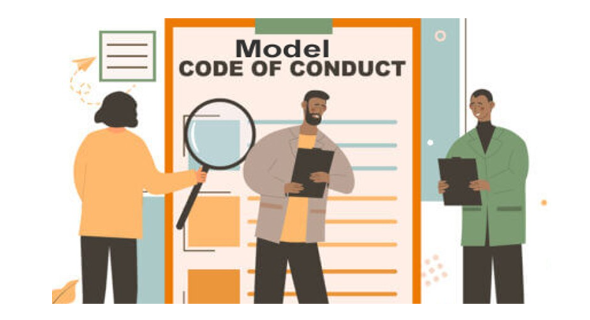
About Model Code of Conduct (MCC)
- The Model Code of Conduct (MCC) is a set of guidelines issued by the Election Commission of India (ECI) to regulate the behaviour of political parties and candidates in the lead-up to elections.
- It aligns with the constitutional mandate given to the ECI under Article 324 to oversee and ensure the fair conduct of parliamentary and state legislature elections.
- The MCC is in effect from the announcement of the election schedule until the declaration of results.
Evolution
- The MCC originated during the 1960 Assembly elections in Kerala when the State administration formulated a 'Code of Conduct' for political actors.
- The Election Commission of India officially circulated the code to recognized political parties and state governments during the 1962 Lok Sabha elections, and it was widely adhered to.
- In 1991, due to repeated violations of election norms and ongoing corruption, the EC decided to enforce the MCC more rigorously.
MCC for Political Parties and Candidates
- Prohibitions
- Political parties are restricted to criticizing opponents based on policies, programs, past records, and work.
- Prohibited activities include using caste and communal sentiments to secure votes, criticizing candidates based on unverified reports, voter bribery, and intimidation.
- Meetings
- Political parties must inform local police authorities in advance about the venue and time of any meeting for adequate security arrangements.
- In case of multiple candidates planning processions along the same route, parties must establish contact in advance to prevent clashes.
- Burning effigies representing members of other political parties is not allowed.
- Polling Day
- Only voters and those with a valid pass from the EC are allowed in polling booths.
- Authorized party workers at polling booths should have suitable badges or identity cards.
- Identity slips provided to voters should be on plain (white) paper without symbols, candidate names, or party names.
- Observers
- The EC appoints observers to whom candidates can report problems regarding the conduct of the election.
- Party in Power
- MCC incorporates restrictions regulating the conduct of the party in power.
- Ministers must avoid combining official visits with election work or using official machinery for election purposes.
- The party must refrain from advertising at the cost of the public exchequer or using official mass media for publicity on achievements.
- Election Manifestos
- Political parties and candidates must adhere to specific guidelines when releasing election manifestos.
- Manifestos should align with constitutional ideals and principles, avoid promises that may influence voters unduly, and provide a rationale for promises with an indication of financial means.
- Manifestos should not be released during the prohibitory period prescribed under Section 126 of the Representation of the People Act 1951 for single or multi-phase elections.
Enforceability of the Model Code of Conduct (MCC)
- While lacking statutory backing, the MCC has gained prominence due to rigorous enforcement by the Election Commission of India (EC).
- Despite not being legally binding, some provisions may be enforced through corresponding statutes like the IPC 1860, CrPC 1973, and RPA 1951.
- In 2013, a parliamentary committee recommended making the MCC legally binding by incorporating it into the RPA 1951.
- However, the ECI opposes this, citing the need for swift elections within approximately 45 days, making lengthy legal proceedings impractical.
Critiques of the Model Code of Conduct (MCC)
- Ineffectiveness in Curbing Electoral Malpractices
- The MCC has been ineffective in preventing various malpractices, including hate speech, fake news, and voter intimidation.
- Emerging technologies and social media platforms pose challenges in addressing rapidly spreading misinformation.
- Lack of Legal Enforceability
- As a non-legally binding document, the MCC relies on moral persuasion and public opinion for adherence.
- This raises concerns about its efficacy in maintaining electoral integrity.
- Interference with Governance
- Critics argue that the MCC limits policy decisions, public spending, and welfare schemes, impacting governance.
- Application timing is a point of contention, with accusations of affecting development activities and public interest.
- Lack of Awareness and Compliance
- There is limited awareness and understanding of the MCC among voters, candidates, parties, and government officials, posing challenges to effective implementation.
|
UPSC Previous Year Questions Prelims (2017) Q. Consider the following statements:
Which of the statements given above is/are correct? (a) 1 and 2 only Ans: (d) Mains (2022) Q. Discuss the role of the Election Commission of India in the light of the evolution of the Model Code of Conduct. |
Source: TH
Climate Engineering - Edukemy Current Affairs
In News: The UNESCO report on Climate Engineering Ethics underscores the need to involve vulnerable groups as essential stakeholders in shaping policies for climate engineering.
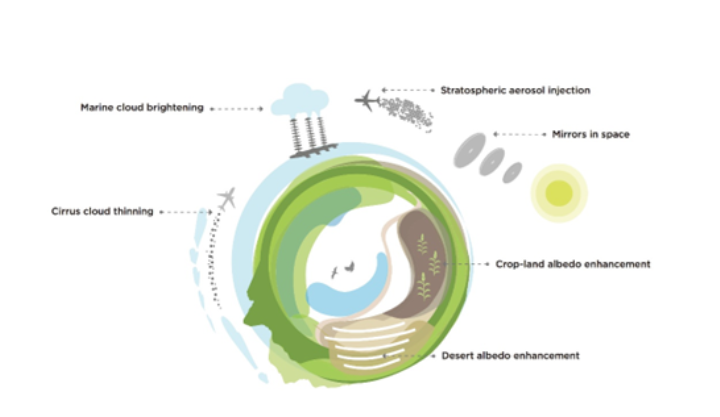
About Climate Engineering
- Climate engineering involves intentionally altering Earth's climate to address or mitigate the impacts of climate change.
- It encompasses techniques to either reflect sunlight away from the Earth or remove greenhouse gases from the atmosphere.
- With a focus on two categories of methods—Carbon Dioxide Removal (CDR) and Solar Radiation Modification (SRM)—CDR aims to capture and store emitted carbon dioxide, while SRM involves various approaches to modify solar radiation, such as increasing surface reflectivity and injecting aerosols into the stratosphere.
- These techniques are receiving policy attention to bridge the gap between climate policy targets and necessary greenhouse gas reductions.
Issues related to climate engineering highlighted in the report encompass ethical, economic, and governance aspects:
- Ethical Issues
- Climate engineering methods may create a "moral hazard" by providing a reason for stakeholders to avoid reducing fossil fuel use.
- A comprehensive approach involves integrating these techniques into a broader climate policy portfolio, moving beyond the moral hazard framework. "Organized irresponsibility" poses a challenge, as uncertainties and combined environmental risks make it difficult to assign blame to specific institutions.
- Economic Issues
- Corporations may advocate for climate engineering as a preferred solution to global warming, aligning it with business investments and economic growth.
- Deployment of these technologies requires international cooperation among countries with diverse economic interests, posing a challenge to tailor solutions for vulnerable countries without endangering others.
- Governance and Regulation Issues
- Current action on climate change faces a gap between the global approach needed and the existing nation state-based legal order.
- Effective climate engineering governance demands a multi-level approach, involving coordination with non-state actors.
- While civil society can press institutions through litigation to fulfil obligations, their involvement also presents potential risks.
UNESCO's report proposes the following recommendations:
- Legislation and Regulation
- UNESCO urges Member States to enact laws regulating climate action, taking into account the transboundary impact on all humans and ecosystems.
- Regional Agreements
- Countries are encouraged to establish regional agreements to prevent the unequal spatial distribution of effects, minimizing risks.
- Ban on Weaponization
- The report advocates for a prohibition on using climate engineering techniques as weapons, emphasizing their peaceful and ethical application.
- Scientific Research Integrity
- UNESCO emphasizes that political or economic interests should not impede scientific research on climate engineering, promoting the integrity of such investigations.
|
UPSC Previous Year Questions Prelims (2019) Q. In the context of which of the following do some scientists suggest the use of cirrus cloud thinning technique and the injection of sulphate aerosol into stratosphere? (a) Creating the artificial rains in some regions Ans: (d) |
Source: DTE
Golan Heights - Edukemy Current Affairs
In News: India supports a United Nations resolution expressing concern about Israel's failure to withdraw from the Golan Heights.
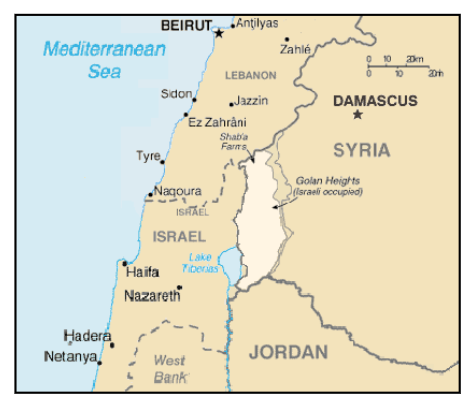
About Golan Heights
- Golan Heights, also known as the Golan Plateau, refers to the border region seized by Israel from Syria during the Six-Day Middle-East War in 1967.
- This area encompasses the western two-thirds of the geological Golan Heights and the section of Mount Hermon under Israeli occupation.
- Geographically, it is surrounded by the Jordan River and the Sea of Galilee to the west, Mount Hermon to the north, the seasonal Wadi Al-Ruqqd to the east, and the Yarm River to the south.
- In terms of international recognition, the United States was the initial country to acknowledge Israel's sovereignty over the Golan, while the rest of the global community views it as Israeli-occupied territory.
Source: HT
MAHASAGAR - Edukemy Current Affairs
In News: MAHASAGAR, the Indian Navy's outreach initiative, had its inaugural virtual session, featuring interaction between the Chief of the Naval Staff of India and leaders from Indian Ocean Region littoral navies.
About SAGAR
India's SAGAR, introduced in 2015 and abbreviated for 'Security and Growth for All in the Region,' constitutes a visionary policy framework. It aims to bolster maritime cooperation and security in the Indian Ocean Region (IOR), emphasizing the significance of fostering collective security and sustainable development for the mutual benefit of all nations in the region.
About The Indian Ocean Rim Association (IORA)
- The Indian Ocean Rim Association (IORA) is an intergovernmental organization formed to foster economic cooperation and regional integration among nations situated along the Indian Ocean.
- Member states of IORA collaborate on initiatives encompassing trade, investment, and sustainable development within the Indian Ocean region (IOR).
- Established on March 7, 1997, the inception of IORA can be traced back to a vision that emerged during the visit of the late President Nelson Mandela of South Africa to India in 1995.
|
UPSC Previous Year Questions Prelims (2015) Q. With reference to ‘Indian Ocean Rim Association for Regional Cooperation (IOR-ARC), consider the following statements:
Which of the statements given above is/ are correct? (a) 1 only Ans: (d) |
Source: PIB
Paris Club group of creditors - Edukemy Current Affairs
In News: Sri Lanka has secured a "tentative agreement" with India and the Paris Club consortium of creditors, which includes Japan, regarding a plan for addressing its debt.
Understanding the Sri Lankan Economic Crisis
The existing economic downturn in Sri Lanka stems from a confluence of factors, including elevated levels of government debt, a substantial trade deficit, diminished foreign exchange reserves, and a decline in economic growth.
Decoding the Paris Club
- The Paris Club, established in 1956 and headquartered in Paris, France, comprises officials from significant creditor nations.
- Its primary mandate is to collaboratively devise sustainable solutions to the payment challenges faced by debtor countries.
- In the context of Sri Lanka's debt, the Paris Club played a pivotal role by providing financial assurances to the International Monetary Fund.
Objective of the Paris Club
The core objective of the Paris Club is to identify and implement sustainable debt-relief measures for countries grappling with challenges in repaying their bilateral loans.
Membership of the Paris Club
- The Paris Club consists of 22 permanent members, all of whom are part of the Organisation for Economic Co-operation and Development (OECD).
- Notably, countries such as India and China are not formal members, with India occasionally participating as an ad-hoc member.
Source: TH
Global Bond Index (GBI) - Edukemy Current Affairs
In News: India is poised to join the GBI-EM Global Index suite, a global bond index, although the RBI has expressed reservations about potential risks.

|
Understanding Bonds |
|
|
Exploring Global Bond Indices |
|
|
Importance of Indices |
|
|
Criteria for Index Inclusion |
|
|
Past Exclusion of India from Global Indices |
|
|
Prospective Benefits of Inclusion |
|
|
Challenges Associated with India's Inclusion |
|
Source: LM
Global Green Credit Initiative
In News: Prime Minister Narendra Modi inaugurated the Global Green Credit Initiative during COP 28 in Dubai.

Overview of the Global Green Credit (GGC) Initiative
- The Global Green Credit (GGC) Initiative is conceived as a mechanism designed to incentivize voluntary environmentally friendly actions, serving as an effective response to the challenges posed by climate change.
- Within its framework, the initiative proposes the issuance of Green Credits for activities such as plantation efforts on waste/degraded lands and river catchment areas, with the goal of rejuvenating and revitalizing natural ecosystems.
- The primary objective of the GGC Initiative is to foster global cooperation and partnerships by facilitating the exchange of knowledge, experiences, and best practices related to the planning, implementation, and monitoring of environmentally positive actions, utilizing programs and mechanisms like Green Credits.
Unveiling India's Green Credits Programme (GCP)
- India's Green Credits Programme (GCP) stands as a groundbreaking market-based initiative aimed at encouraging voluntary environmental initiatives across diverse sectors.
- Stakeholders encompass individuals, communities, private sector industries, and companies, fostering a collective effort toward sustainability.
- Announced in the Union Budget 2023-24 and officially launched by the Environment Ministry in October 2023, the GCP draws inspiration from existing market-based systems, such as those for carbon trading, both nationally and internationally.
- Just as companies or nations can earn carbon credits by reducing their carbon footprint, the Green Credits Programme extends this mechanism to various environmental actions like water conservation and soil improvement, opening avenues for trade and monetary benefits.
- In its initial phase, the GCP places a spotlight on two pivotal activities: water conservation and afforestation.
- Private companies are encouraged to participate by purchasing these green credits, aligning with their Corporate Social Responsibility (CSR) obligations.
- Administered by the Indian Council of Forestry Research and Education (ICFRE), the GCP not only signifies a significant step towards environmental sustainability but also represents a collaborative effort to address broader ecological challenges.
Source: PIB
Anthrobots - Edukemy Current Affairs
In News: Researchers have recently created tiny robots using human cells, naming them anthrobots.

Anthrobots: Self-Assembling Bio-Robots with Regenerative Capabilities
- Anthrobots, constructed from human tracheal cells, are bio-robots showcasing self-assembly capabilities.
- Within laboratory settings, these entities exhibit both movement and the ability to heal neurons.
- Notably, they possess the unique ability to spontaneously fuse into larger structures known as superbots, promoting neuron growth.
- Anthrobots vary in structure and behaviour, with some adopting a spherical shape covered in cilia, while others take on a football shape irregularly adorned with cilia.
- Measuring between the width of a human hair and the tip of a sharpened pencil, they distinguish themselves from Xenobots, which are crafted from frog embryonic stem cells.
Applications
These innovative anthrobots hold significant promise in the realms of regenerative medicine, wound healing, and disease treatment.
Source: NJ
Rural Empowerment: Inclusive Development for Differently Abled
In News: There is a necessity for increased inclusive opportunities and employment in rural areas, given that the majority of individuals with disabilities reside in these regions.
Global Disability Scenario
- Scale of Disability
- Over 1.3 billion people globally, equivalent to nearly India's entire population, live with some form of disability.
- Global Economic Impact
- Inclusion of persons with disabilities in the economy can boost global GDP by 3% to 7%, according to ILO.
- Current Challenges
- Current systems designed for persons without disabilities result in exclusion, leading to poverty, limited education, and economic discrimination.
Disability Scenario in India
In India out of the 121 Cr population, 2.68 Cr persons are ‘disabled’ which is 2.21% of the total population.
|
Population, India 2011 |
Disabled persons, India 2011 |
||||
|
Persons |
Males |
Females |
Persons |
Males |
Females |
|
121.08 Cr |
62.32 Cr |
58.76Cr |
2.68 Cr |
1.5 Cr |
1.18 Cr |
Disability Scene in Rural India
Majority (69%) of the disabled population resided in rural areas (1.86 Cr disabled persons in rural areas and 0.81 Cr in urban areas). In the case of total population also, 69% are from rural areas while the remaining 31% resided in urban areas.
- Government Initiatives
- Central and State governments in India have various schemes and a UDID card for persons with disabilities.
- Awareness and Connectivity
- Awareness and last-mile connectivity challenges are acute, especially in rural areas.
- Unique Rural Challenges
- Rural areas face heightened challenges, including limited access to education and employment.
- Digital divide being one of the most major impediments for rural people with disability to get access to medica and healthcare facilities.
- Poverty and excessive dependence on agriculture sector which is a gamble due to unpredictable nature of monsoons.
Challenges Faced by Rural Disabled
- Limited Access
- Rural areas have more limited access to education and employment for persons with disabilities.
- Exclusion in Developmental Schemes
- Persons with disabilities in rural areas are sometimes excluded from developmental schemes.
- Attitudinal Barriers
- Viewed as objects of charity rather than individuals with agency and the ability to participate in decision-making.
Why Specially Abled People Should Be Encouraged?
- Economic Contribution
- Inclusion of persons with disabilities can boost the global economy. As per ILO this can boost the global economy by 3% to 7%
- Legal Framework
- Compliance with the UN Convention on the Rights of Persons with Disabilities requires a shift in attitudes and perceptions.
- Private Sector Role
- Private sector involvement is crucial for promoting employment of persons with disabilities.
Way Forward
- The SPARK Project
- Initiatives like the SPARK project demonstrate success in creating attitudinal shifts and promoting inclusion.
- Government Role
- Governments should prioritize awareness and last-mile connectivity, especially in rural areas.
- Private Sector Engagement
- Engaging employers' federations and trade unions is essential for successful inclusion efforts.
- Global Commitment
- A fundamental shift in commitment, solidarity, financing, and action is critical for prioritizing the needs of persons with disabilities on the global development agenda.
Source: TH
Share the article
Edukemy’s Current Affairs Quiz is published with multiple choice questions for UPSC exams
MCQ
Get Latest Updates on Offers, Event dates, and free Mentorship sessions.

Get in touch with our Expert Academic Counsellors 👋
FAQs
UPSC Daily Current Affairs focuses on learning current events on a daily basis. An aspirant needs to study regular and updated information about current events, news, and relevant topics that are important for UPSC aspirants. It covers national and international affairs, government policies, socio-economic issues, science and technology advancements, and more.
UPSC Daily Current Affairs provides aspirants with a concise and comprehensive overview of the latest happenings and developments across various fields. It helps aspirants stay updated with current affairs and provides them with valuable insights and analysis, which are essential for answering questions in the UPSC examinations. It enhances their knowledge, analytical skills, and ability to connect current affairs with the UPSC syllabus.
UPSC Daily Current Affairs covers a wide range of topics, including politics, economics, science and technology, environment, social issues, governance, international relations, and more. It offers news summaries, in-depth analyses, editorials, opinion pieces, and relevant study materials. It also provides practice questions and quizzes to help aspirants test their understanding of current affairs.
Edukemy's UPSC Daily Current Affairs can be accessed through:
- UPSC Daily Current Affairs can be accessed through Current Affairs tab at the top of the Main Page of Edukemy.
- Edukemy Mobile app: The Daily Current Affairs can also be access through Edukemy Mobile App.
- Social media: Follow Edukemy’s official social media accounts or pages that provide UPSC Daily Current Affairs updates, including Facebook, Twitter, or Telegram channels.



